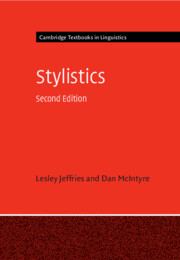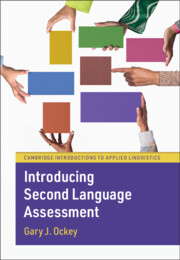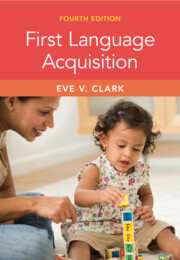2647 results in Cambridge Textbooks

Stylistics
- Coming soon
-
- Expected online publication date:
- January 2025
- Print publication:
- 31 December 2024
-
- Textbook
- Export citation
Linguistic Contact and Language Change
- An Introduction
- Coming soon
-
- Expected online publication date:
- November 2024
- Print publication:
- 31 December 2024
-
- Textbook
- Export citation

Introducing Second Language Assessment
- Coming soon
-
- Expected online publication date:
- October 2024
- Print publication:
- 31 October 2024
-
- Textbook
- Export citation

First Language Acquisition
- Coming soon
-
- Expected online publication date:
- June 2024
- Print publication:
- 20 June 2024
-
- Textbook
- Export citation
6 - Vocabulary
-
- Book:
- A Practical Guide to Second Language Teaching and Learning
- Published online:
- 03 May 2024
- Print publication:
- 30 May 2024, pp 122-141
-
- Chapter
- Export citation
Key Terms
-
- Book:
- A Practical Guide to Second Language Teaching and Learning
- Published online:
- 03 May 2024
- Print publication:
- 30 May 2024, pp 302-318
-
- Chapter
- Export citation
7 - Pronunciation
-
- Book:
- A Practical Guide to Second Language Teaching and Learning
- Published online:
- 03 May 2024
- Print publication:
- 30 May 2024, pp 142-162
-
- Chapter
- Export citation
11 - Psychological Individual Differences
-
- Book:
- A Practical Guide to Second Language Teaching and Learning
- Published online:
- 03 May 2024
- Print publication:
- 30 May 2024, pp 239-257
-
- Chapter
- Export citation
2 - Second Language Acquisition
-
- Book:
- A Practical Guide to Second Language Teaching and Learning
- Published online:
- 03 May 2024
- Print publication:
- 30 May 2024, pp 22-46
-
- Chapter
- Export citation
Copyright page
-
- Book:
- A Practical Guide to Second Language Teaching and Learning
- Published online:
- 03 May 2024
- Print publication:
- 30 May 2024, pp iv-iv
-
- Chapter
- Export citation
4 - Input, Interaction, and Output
-
- Book:
- A Practical Guide to Second Language Teaching and Learning
- Published online:
- 03 May 2024
- Print publication:
- 30 May 2024, pp 74-96
-
- Chapter
- Export citation
8 - Pragmatics
-
- Book:
- A Practical Guide to Second Language Teaching and Learning
- Published online:
- 03 May 2024
- Print publication:
- 30 May 2024, pp 163-185
-
- Chapter
- Export citation
13 - The Research–Practice Dialogue
-
- Book:
- A Practical Guide to Second Language Teaching and Learning
- Published online:
- 03 May 2024
- Print publication:
- 30 May 2024, pp 282-301
-
- Chapter
- Export citation
Reviews
-
- Book:
- A Practical Guide to Second Language Teaching and Learning
- Published online:
- 03 May 2024
- Print publication:
- 30 May 2024, pp ii-ii
-
- Chapter
- Export citation
5 - Grammar
-
- Book:
- A Practical Guide to Second Language Teaching and Learning
- Published online:
- 03 May 2024
- Print publication:
- 30 May 2024, pp 97-121
-
- Chapter
- Export citation
Acknowledgments
-
- Book:
- A Practical Guide to Second Language Teaching and Learning
- Published online:
- 03 May 2024
- Print publication:
- 30 May 2024, pp xxii-xxii
-
- Chapter
- Export citation
9 - Academic Language Skills
-
- Book:
- A Practical Guide to Second Language Teaching and Learning
- Published online:
- 03 May 2024
- Print publication:
- 30 May 2024, pp 186-213
-
- Chapter
- Export citation
10 - Cognitive Individual Differences
-
- Book:
- A Practical Guide to Second Language Teaching and Learning
- Published online:
- 03 May 2024
- Print publication:
- 30 May 2024, pp 214-238
-
- Chapter
- Export citation
Index
-
- Book:
- A Practical Guide to Second Language Teaching and Learning
- Published online:
- 03 May 2024
- Print publication:
- 30 May 2024, pp 319-324
-
- Chapter
- Export citation
12 - Social Individual Differences
-
- Book:
- A Practical Guide to Second Language Teaching and Learning
- Published online:
- 03 May 2024
- Print publication:
- 30 May 2024, pp 258-281
-
- Chapter
- Export citation

